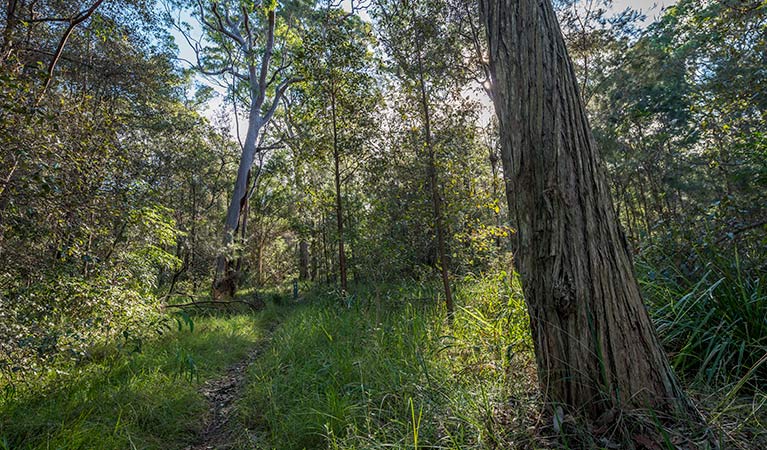Wallumatta Nature Reserve
Overview
A short drive from Sydney CBD, the unique open forests of Wallumatta Nature Reserve offer a quick nature getaway with bushwalking and birdwatching, near Ryde.
Read more about Wallumatta Nature Reserve
For a quick nature getaway without leaving town, Wallumatta Nature Reserve, near Ryde, protects the largest remnant forest of the Sydney turpentine and ironbark forest. Only 10km from the Sydney CBD, you’ll soon discover why it’s much-loved by locals as well as those keen on birdwatching and bushwalking.
The reserve was historically set aside as part of the Field of Mars Common in 1804 and again, in the 1980s, it was saved from housing development. Now it’s a tranquil bush oasis nestled in the suburbs and an important resource for environmental education and scientific research. Popular with botanists and school groups alike, local bush regeneration groups help to preserve this valuable original bushland.
With over 30 species of native birds, birdwatching is a must during your visit. While walking, keep an eye out for black-shouldered kites, masked lapwings and the vibrant blue-winged sacred kingfisher.
Local alerts
For the latest updates on fires, closures and other alerts in this area, see https://www.nationalparks.nsw.gov.au/visit-a-park/parks/wallumatta-nature-reserve/local-alerts
Contact
- in the Sydney and surrounds region
Wallumatta Nature Reserve is open sunrise to sunset but may have to close at times due to poor weather or fire danger.
-
-
Lane Cove National Park Office
02 8448 0400
Contact hours: Monday to Friday, 9am to 4pm. - Lane Cove National Park, 2 Max Allen Road Lindfield NSW 2070
-
Email: npws.northwesternsydney@environment.nsw.gov.au
-
Lane Cove National Park Office
-
-
Bobbin Head Visitor Centre
02 9472 8949
Contact hours: 10am to 4pm daily. 9am to 4pm during summer school holidays, closed 12pm-12:30pm. Closed Christmas Day. - 688 Ku-ring-gai Chase Road, Mount Colah, NSW 2079
-
Email: bobbin.head@environment.nsw.gov.au
-
Bobbin Head Visitor Centre
Visitor info
All the practical information you need to know about Wallumatta Nature Reserve.
Map
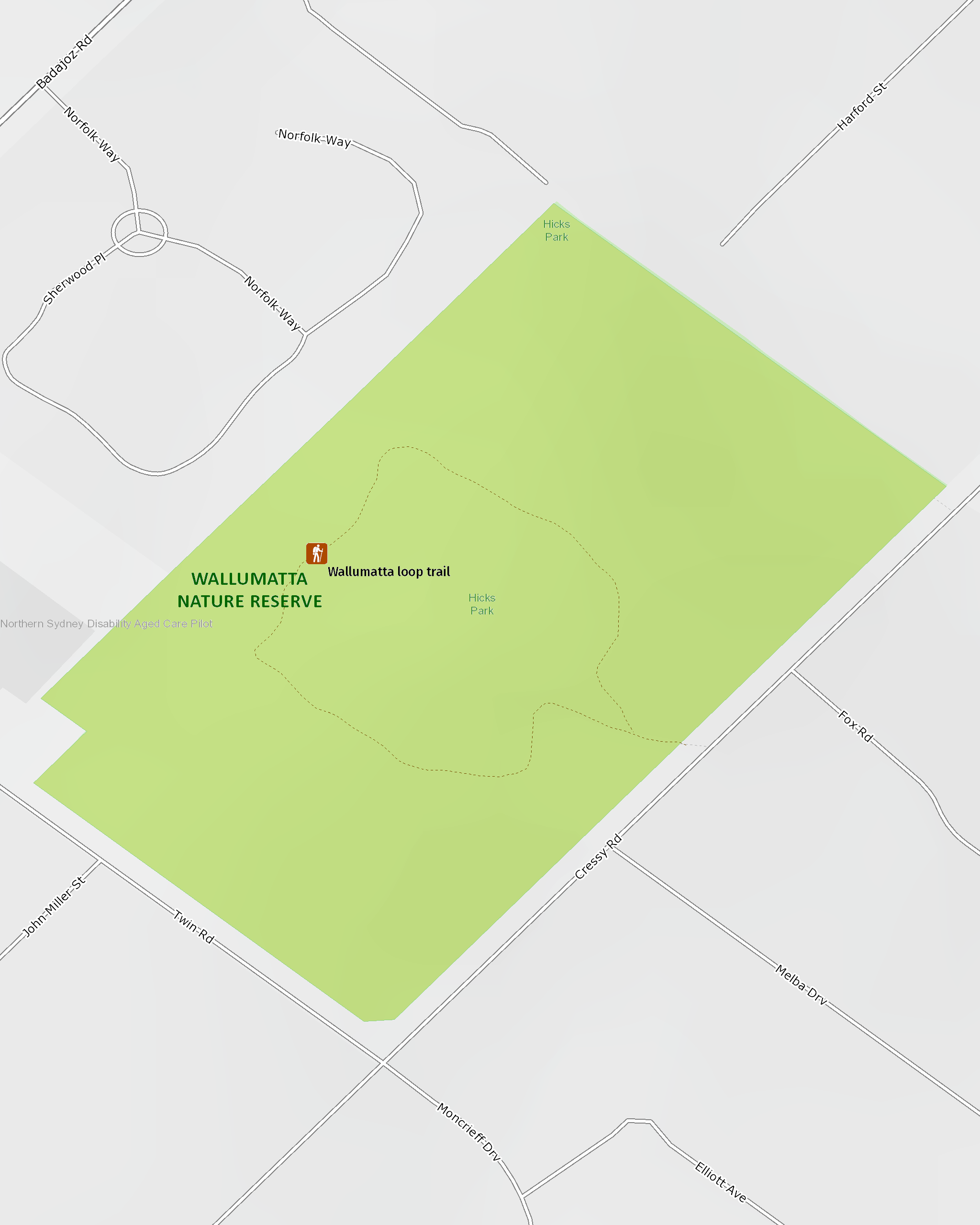
Map legend

Getting there and parking
Get driving directions
From Sydney CBD:
- Head north from the CBD over Sydney Harbour Bridge. Keep right to stay on Bradfield Highway, follow the signs for Metroad 1 and drive for 4.6 km.
- Continue onto Metroad 2 (look for the signs to Lane Cove Tunnel, Epping and Windsor), continue for 5.1km and take the Epping Road exit to North Ryde.
- Turn left onto Pittwater Road and look for the signs to East Ryde. Then turn right onto Blenheim Road for 750m, then right onto Cox’s Road.
- Take the exit at the roundabout to Badajoz Road, follow to the next roundabout, and turn left onto Twin Road. Take the next left onto Cressy Road, drive 200m, and you’ll arrive at the reserve entrance.
By bike
Check out the Bicycle information for NSW website for more information.
By public transport
Wallumatta Nature Reserve is accessible by train and bus from either Macquarie University Railway Station or Town Hall Station (via Sydney Buses Route 506). For information about public transport options, visit the NSW transport info website.
Best times to visit
There are lots of great things waiting for you in Wallumatta Nature Reserve. Here are some of the highlights.
Autumn
Take your camera for some excellent shots of birdlife as they nest and forage throughout the open forest. It's a great time for a spot of birdwatching.
Spring
Spring is a great time to explore as many of the native plants are in flower.
Summer
Escape the heat with a relaxing stroll through the shady forest.
Winter
Enjoy a brisk walk through the forest or link with the local Bushcare volunteers who help preserve this unique forest remnant.
Weather, temperature and rainfall
Summer temperature
Average
16.2°C and 28.4°C
Highest recorded
45.5°C
Winter temperature
Average
6.2°C and 19°C
Lowest recorded
-1°C
Rainfall
Wettest month
February
Driest month
July
The area’s highest recorded rainfall in one day
293mm
Maps and downloads
Prohibited
Pets
Pets and domestic animals (other than certified assistance animals) are not permitted. Find out which regional parks allow dog walking and see the pets in parks policy for more information.
Smoking
NSW national parks are no smoking areas.
Nearby towns
Balmain (10 km)
Browse Darling Street for your fill of retail therapy at galleries, bookshops and homeware shops. In narrow back streets, you'll discover architectural styles typical of the 1800s and early 1900s.
Parramatta (15 km)
Parramatta offers a fascinating insight into early colonial life in Australia. Don't miss a visit to Old Government House, now one of 11 Australian Convict Sites on the UNESCO World Heritage list.
Sydney City Centre (16 km)
No trip to Sydney is complete without spending some time in the city’s beautiful parks. Whether it’s in central areas like Hyde Park or the Royal Botanic Gardens or further out in Centennial Parklands, there’s plenty of green space to go out and enjoy.
Learn more
Wallumatta Nature Reserve is a special place. Here are just some of the reasons why:
Preserving forests
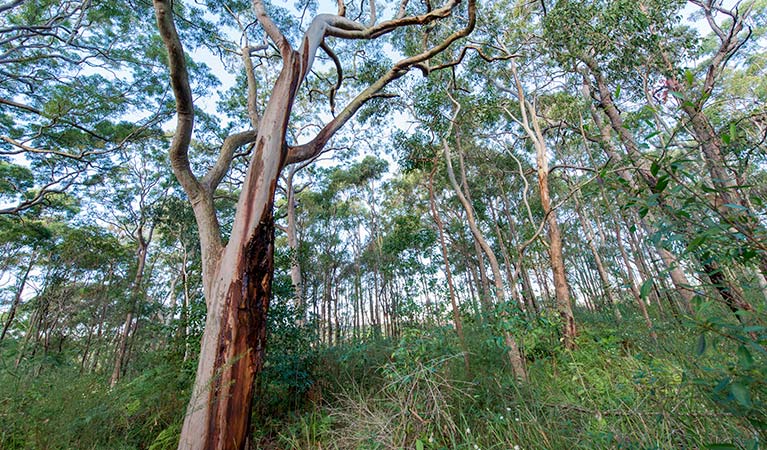
It's believed that Governor King named the tract of land after the name for the area used by the Aboriginal Wallumedegal People. In 1804, Governor Phillip King set aside 2,500ha that originally included the 6.2ha that make up Wallamutta Nature Reserve today.
Hands-on bush care
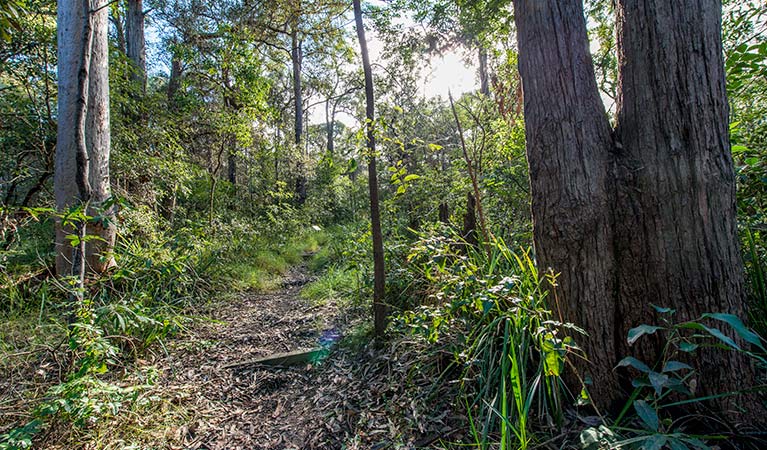
A popular reserve in north-west Sydney, the unique forest is a demonstration site for best practice of the management of turpentine-ironbark forest. It's a haven for research and environmental education by local schools and universities in the area. If you fancy a hands-on nature learning experience, why not help preserve the unique bushland within the reserve? You can join the local bush regeneration group on one of their regular meetings within the reserve. For further information, email the Lane Cove Bush Regeneration Officer, or phone (02) 9410 0102.
- Wallumatta loop trail For an easy family getaway in Sydney, Wallumatta loop trail offers walking, birdwatching and bush regeneration in Wallumatta Nature Reserve, near Ryde.
Feathered flight path
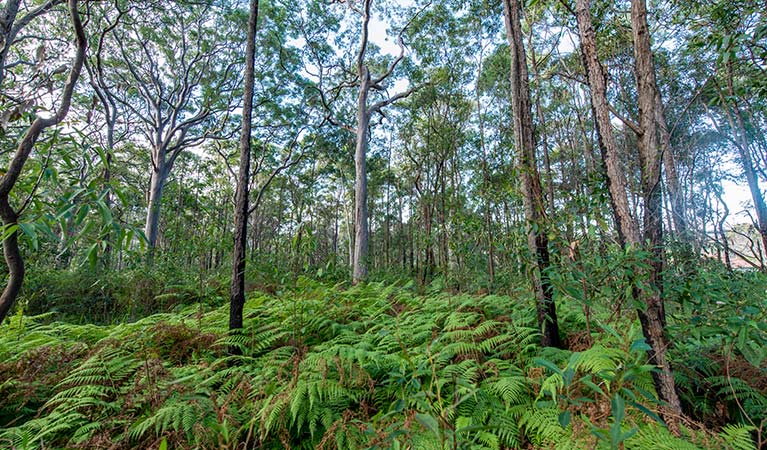
You're bound to see at least some of the over 30 species of birds that thrive in the reserve. While out walking, you might see vibrant rainbow lorikeets, crimson rosellas and even the black-shouldered kite. The flowers in spring attract the yellow-faced honeyeater and superb fairy wren, so bring along your binoculars for a spot of bird watching.
- Wallumatta loop trail For an easy family getaway in Sydney, Wallumatta loop trail offers walking, birdwatching and bush regeneration in Wallumatta Nature Reserve, near Ryde.
Education resources (1)
What we're doing
Wallumatta Nature Reserve has management strategies in place to protect and conserve the values of this park. Visit the OEH website for detailed park and fire management documents.

